A Utah water cycle: Water, milk and 2,973 Chick-fil-A restaurants
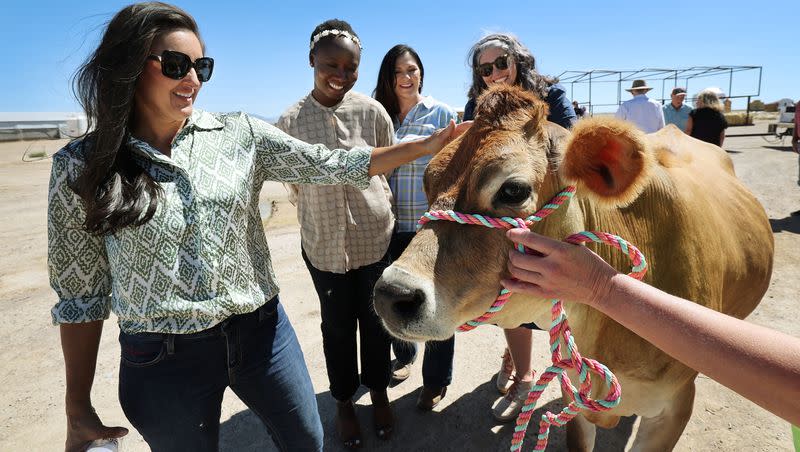
Even though Millard County is arid sagebrush country and didn’t set any records for snowfall last winter, it is exporting some of its most precious and finite resource.
Water.
It doesn’t leave by pipeline and it isn’t siphoned from underground for transport elsewhere.
Instead, it leaves via tankers in the form of milk, derived from local dairy cows who eat locally the locally grown grain, silage and alfalfa that it irrigates.
When jobs dried up in Millard County after the construction of the Intermountain Power Plant was complete, the economy began spiraling into a chokehold in the late 1980s and early 1990s.
Then-County Administrator Robyn Pearson and the county attorney at the time, Warren Peterson, said it didn’t make sense to ship their most precious resource — goods derived from water — to another state.
“The county was so reliant on the economy coming from the Intermountain Power Plant project with the construction workers and them spending their money, what we were seeing was it taking a nose dive. It was dreadful times,” Pearson said. “We were shipping hay to California because it was the only place to get rid of it. It was a loser all the way around.”
The commission and Peterson crafted a marketing and recruitment plan to lure out-of-state dairy farmers to relocate their operations to Millard County. Its alfalfa, because of the ideal growing conditions, consistently earned top honors in an international alfalfa competition.
In Connecticut, the Nye family’s attention was captured by the campaign and by 1995, they had moved 425 Holsteins and their three children to Millard County.
A recent two-day tour that included multiple stops in Millard County and a tour of Danone North America’s plant in West Jordan highlighted the nexus that exists among water, alfalfa, dairy farmers and fresh milk transformed into yogurt by the international company that controls the global market share.
The tour was organized by Salt Lake County Council member Dea Theodore and, for the first segment, hosted by the Millard County Farm Bureau.
Theodore said she was inspired to learn more about rural water usage because of the Great Salt Lake’s problems and criticism leveled at the agricultural sector, particularly alfalfa farmers.
“There’s been a lot of talk that they are consuming more water than they should and in coming down here, you learn that’s really not the case,” she said. “It’s interesting to learn along the way all that they are doing to conserve, what they are doing for the efficiency of their operations, the jobs that they provide for the local economy and to help the state.”
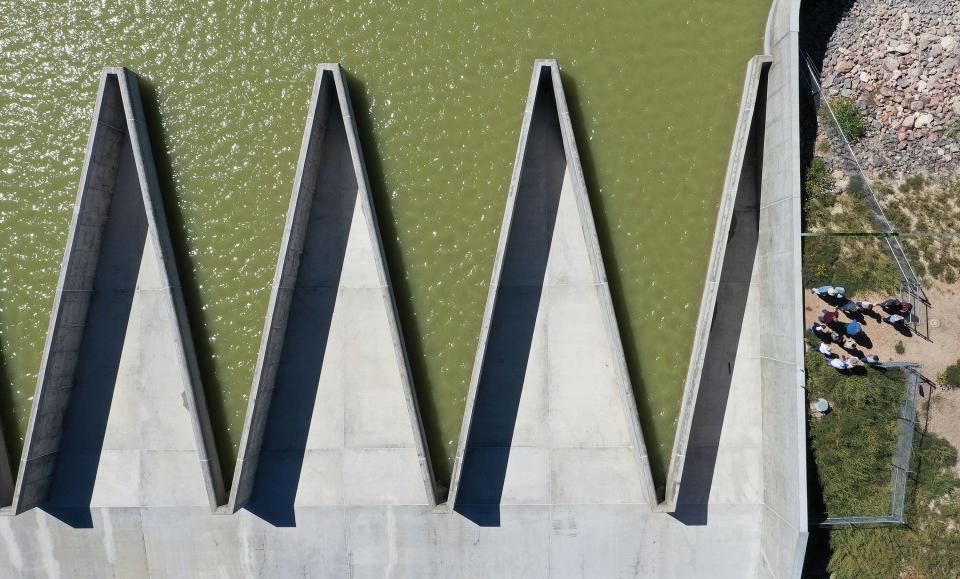
The world’s most efficiently used water?
The 400-mile long Sevier River flows south to north in southwest and central Utah, sustaining wildlife, recreation, towns, industries and farms along the way.
It delivers water for the state’s largest privately owned reservoir, Yuba, and its sprawling watershed of over 9,900 square miles occupies an area larger than Vermont.
The system was studied by Utah State University and was found to be the most efficient among watersheds surveyed in a global examination.
“A single drop of water is used six or seven times,” said Mike Styler, a Millard County farmer, former commissioner, state legislator and previously the director of the Utah Department of Natural Resources.
The water is taken out for farming or for other uses and returned to the system. Over and over and over again.
Some of that water — 10,000 acre-feet — is stored for irrigation at the DMAD Reservoir which was rebuilt for dam safety and features the largest accordion-style dam in the West.
Related
The Sevier River drainage area is also the state’s most active place for projects led by Utah’s Watershed Restoration Initiative, according to its executive director, Tyler Thompson.
He showed the group on the tour the dozens upon dozens of areas where work has been completed or is ready to go.
“If you were to look at a map of Salt Lake County or Cache Valley, it would look a lot different,” Thompson said, adding that urban water conservation districts are now starting to catch on in the face of Utah’s prolonged drought.
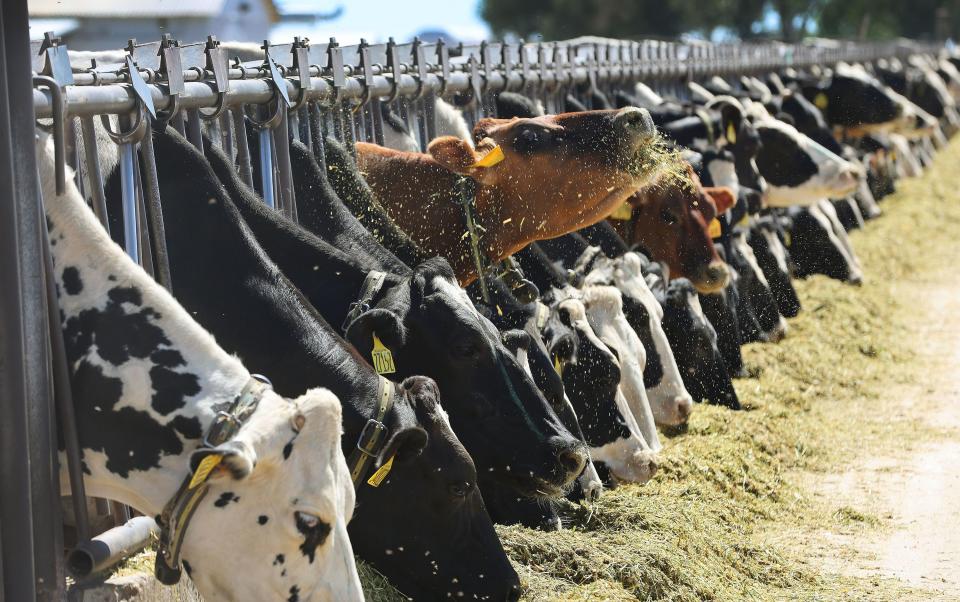
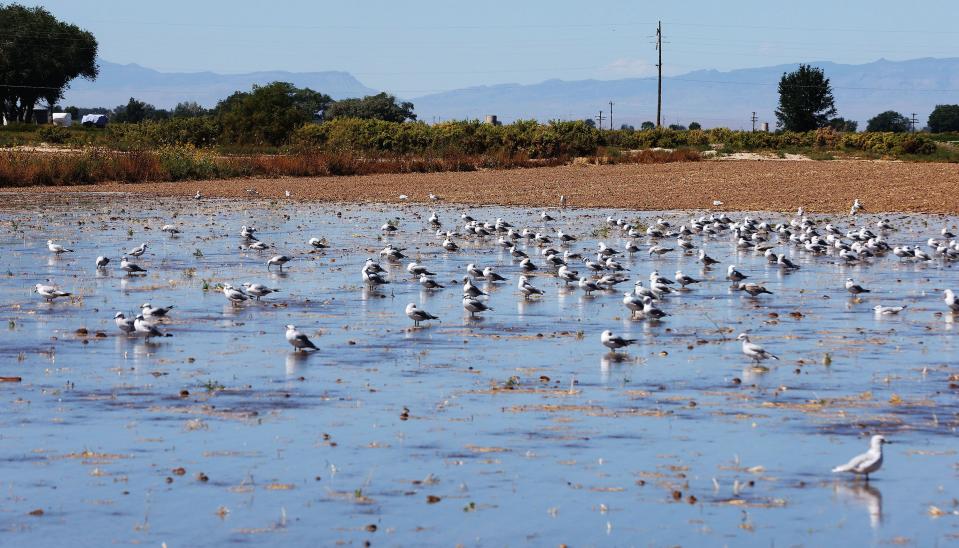
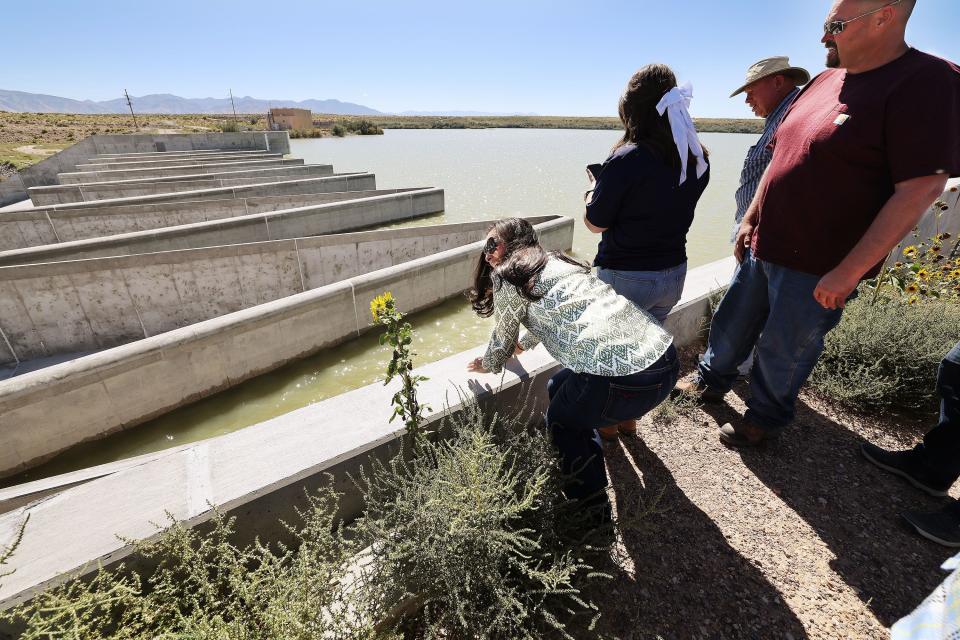
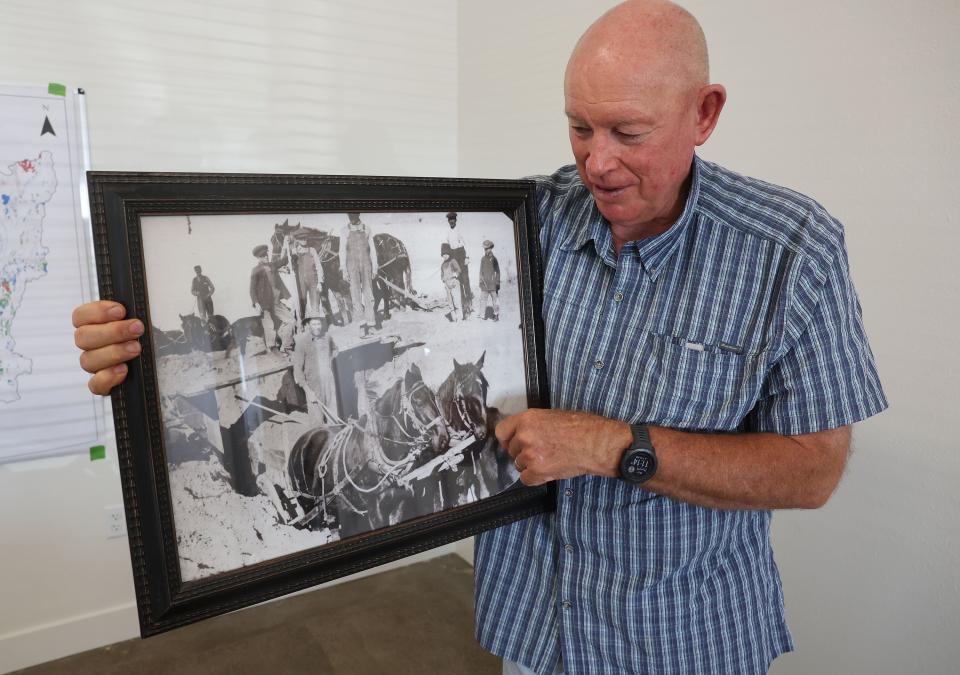
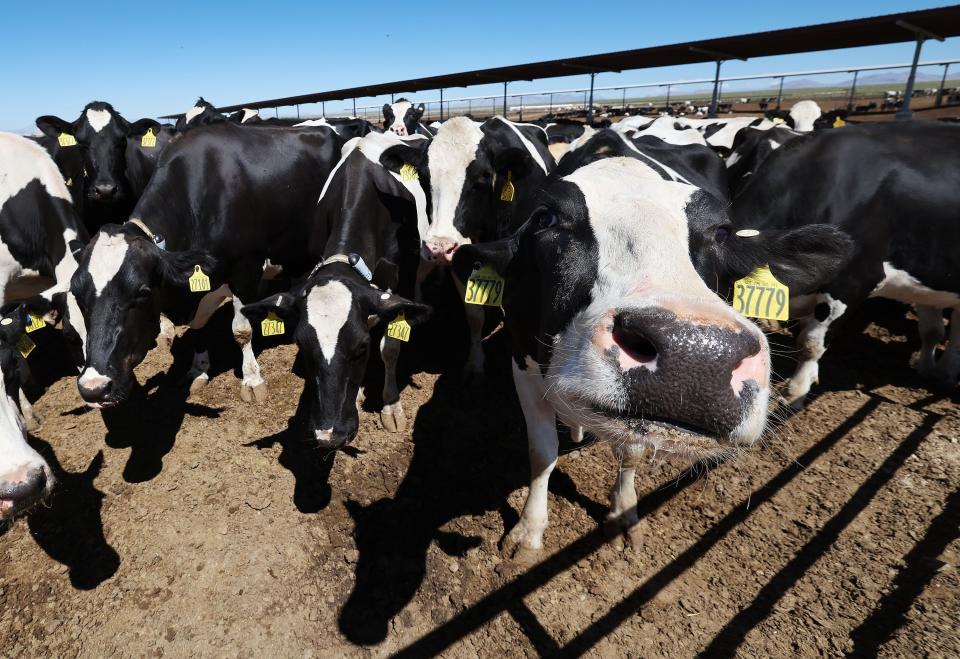
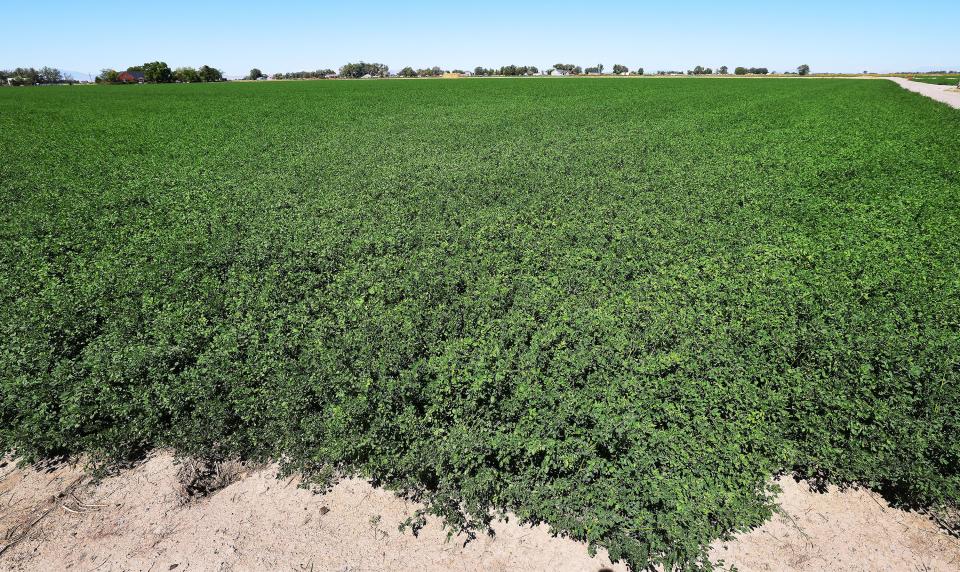
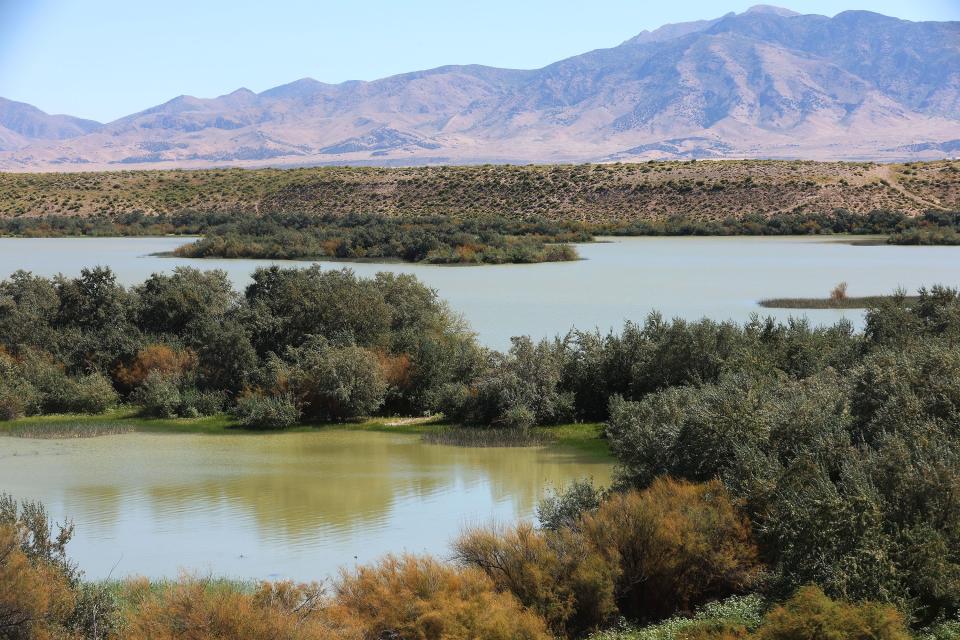
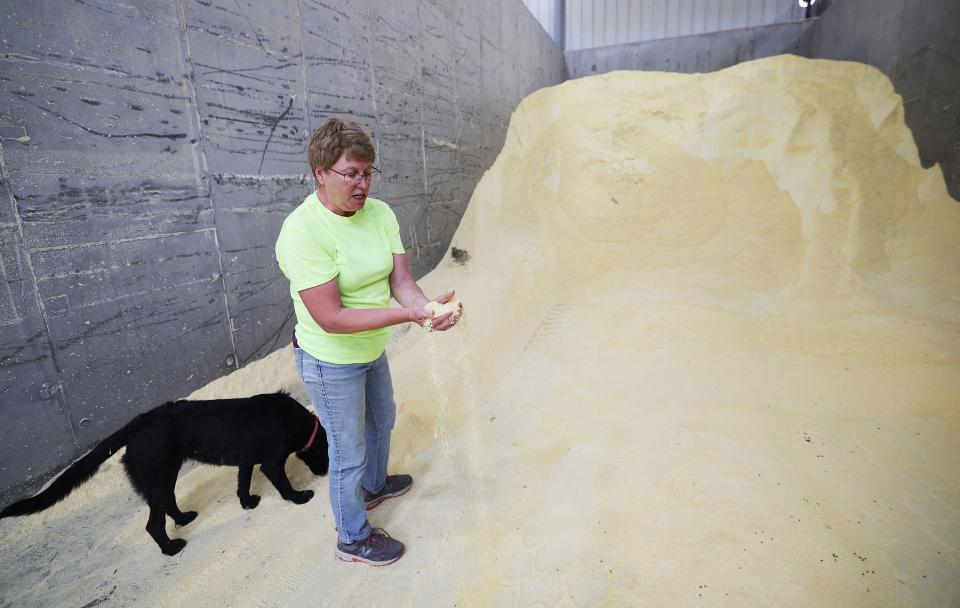
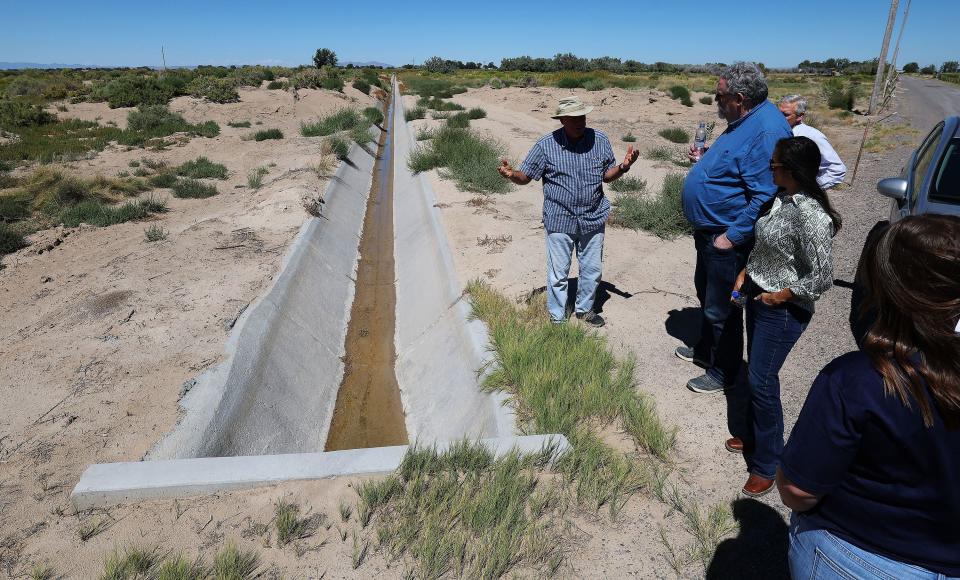
The program has been such a success that land managers and property owners scramble for funding. The initiative receives $6 million from the state Legislature a year, but recently fielded $75 million in project requests.
Farmers and ranchers are also enclosing ditches in cement to save water loss to evaporation where possible, or leveling fields with laser or GPS technology.
Related
Andy Nickle, president of DMAD Company and a local farmer, said leveling a field with GPS so it is configured as smooth as a pool tabletop boosts water efficiency significantly.
As his truck maneuvered along narrow country roads, a nonleveled field underscored that point with a small spot of pooled water. A majority of the area farms, however, have been leveled using technology.
Erin Sorenson, president of the Millard County Farm Bureau, said efficiencies have to be built into the system because of its arid nature.
“We don’t have enough water to willy-nilly throw it on the ground.”
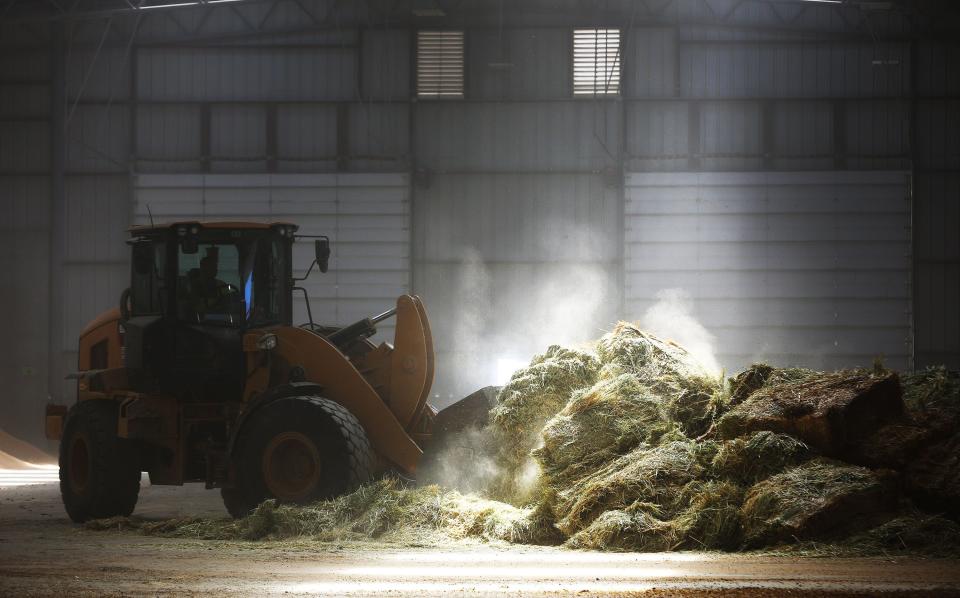
Water, Utah alfalfa and fresh dairy
Alfalfa farmers in particular and agriculture in general have come under scrutiny and criticism because they use the majority of diverted water in Utah. Water conservation groups, members of academia and even some government officials in the West have criticized growing the crop amid a water scarcity crisis.
In drought-stricken Arizona, a Saudi-owned dairy company growing alfalfa prompted an investigation by the state attorney general and local outrage over exporting that state’s water, essentially, to a kingdom. In Utah, a major media outlet editorialized alfalfa farmers should have their water rights bought and cease farming because that practice has become a greater liability to the state’s economy than what it is worth.
Styler said the attacks on alfalfa and other aspects of agriculture are “out of touch with reality.”
“Doing away with agriculture is the same as saying we should stop eating,” he said, adding he finds it curious alfalfa has been singled out when the corn he grows takes more water.
Related
The U.S. Department of Agriculture noted that per capita, people consumed 667 pounds of dairy products in 2021.
Dairy products come from cows which depend on alfalfa and, according to Utah State University, removing alfalfa fields in the West would have disastrous environmental and economic impacts. Its production in the West has a worth of $8.5 billion as of 2018 in a region that supplied nearly half the nation’s milk supply.
Related
Since the Nye family moved its cows to just outside Delta, its operation has grown to 5,000 milking cows in Millard County. Each cow produces roughly 10 gallons of milk per day.
The Nyes’ cows go through between 15,000 and 20,000 tons of hay per year, as well as much as 80,000 tons of corn silage and 6,000 tons of small grain hay.
That livestock food supply is local, which was one of the major drivers of the family’s decision to relocate their operation to Millard County. The Nyes currently employ 75 people.
Greg Nye, the son of John and Maria Nye, said the family did not want to be in both the business of farming and taking care of dairy cows, and moving to Millard County allowed them to accomplish that goal.
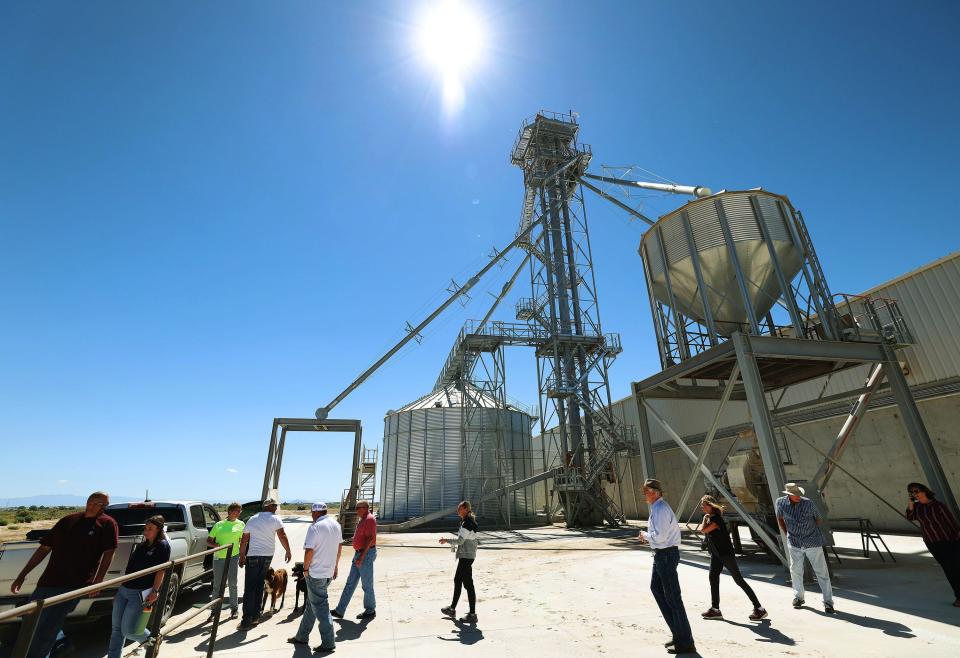
It’s not just farming, it’s science
Like the water efficiencies in play in much of the region, the Nye family embraces technology in their business. They have a hospital barn for any animal that might be struggling and in need of separation from the others.
All of the cows at the dairy operation wear fitness tags tracking their daily activity. Maria Nye said that information is sent to a computer and is used to help monitor the animal’s health.
“It can translate that movement into a healthy cow versus not a healthy cow,” she said.
Greg Nye did research to design their livestock feed storage complex. He had huge food mixers installed that can process two tons of feed per hour. The mixers are like a Kitchenaid on steroids.
Sorenson said she was glad to host Theodore and representatives from the offices of Salt Lake County Council members David Alvord and Corinne Johnson in Millard County to help build bridges to understanding.
“Utah’s a very unique blend of rural and urban and it’s a symbiotic relationship. And so what we do is provide food and fiber that fills grocery stores for all those people who live out there. But then in return, what we need is an understanding and support from them with the policies they pass or support.”
She emphasized what happens in Millard County does not stay in Millard County.
“It’s so vital that they (the Salt Lake County council members) are recognizing and supporting the fact that what we’re doing down here is important to their constituents,” she said, adding that having a safe and stable food supply impacts urbanized Utah.
The agriculture providing that food supply includes the alfalfa that is in the crosshairs of water use critics.
The USU report points out that alfalfa is ideal for the landscapes in the West because it is so drought resistant. While it uses more water than other crops, it is actually more efficient than other types because it is harvested multiple times a year. The perennial plant can grow at all elevations and is a critical source of food for pollinators like bees, which are in steep decline due to hive collapse.
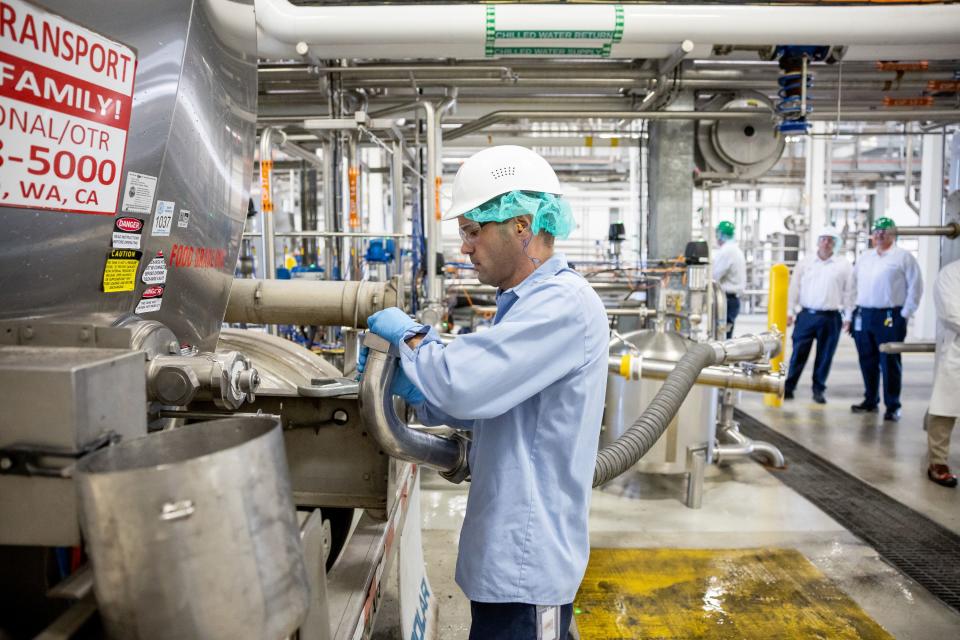
Human consumption of alfalfa
People also ingest alfalfa in a powder formulated into tablets to create one of the most mineral-rich supplements available.
Styler’s 350 acres of alfalfa goes to support the Nye operation, which produces 50,000 gallons of milk per day, delivered to the Wasatch Front.
On the second day of the tour, Theodore and the group visited the Danone North America plant in West Jordan. The facility is where every gallon of milk produced by the Nye dairy is delivered.
The plant in Salt Lake County is among the three largest in the country, producing three million cups of yogurt a day via a variety of brands that include Dannon, Activia, Light + Fit Dannon, Oikos, True Good, Danimals — yogurt and smoothies geared at children — and organic Wallaby.
If you have tried the Greek yogurt parfait at Chick-fil-A at its 2,973 U.S. restaurants, you have tasted the product made from dairy milk that comes from Millard County alfalfa and other dairy rich regions in the West. The Wallaby yogurt is used in that parfait, and along with True Good, is exclusively made in West Jordan.
Danone North America’s 24/7 operation in West Jordan happens in a tightly controlled 400,000 square-foot building where 20 to 25 trucks per day deliver 12 million pounds of dairy milk each week. It has 290 employees.
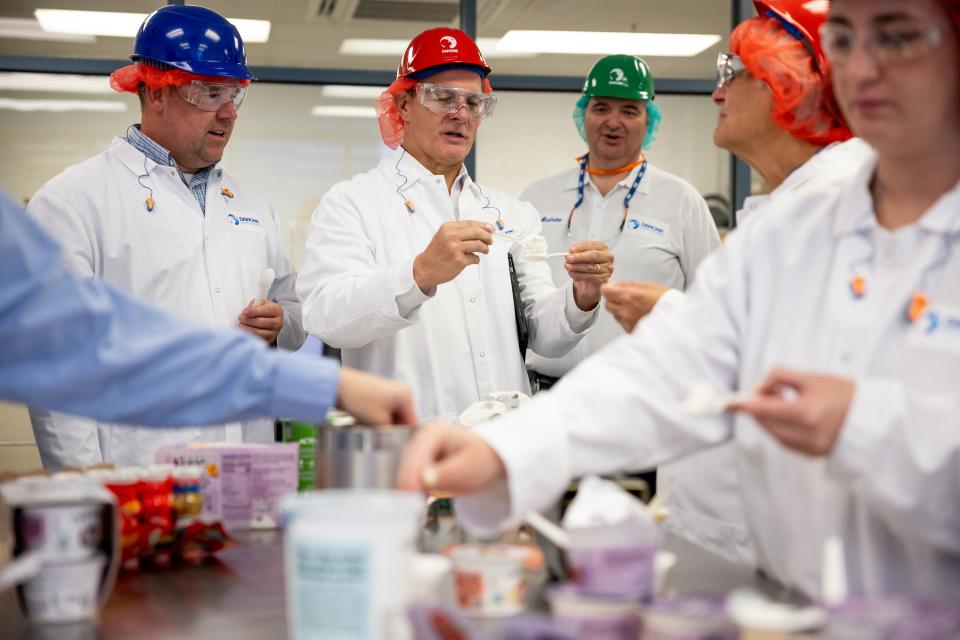
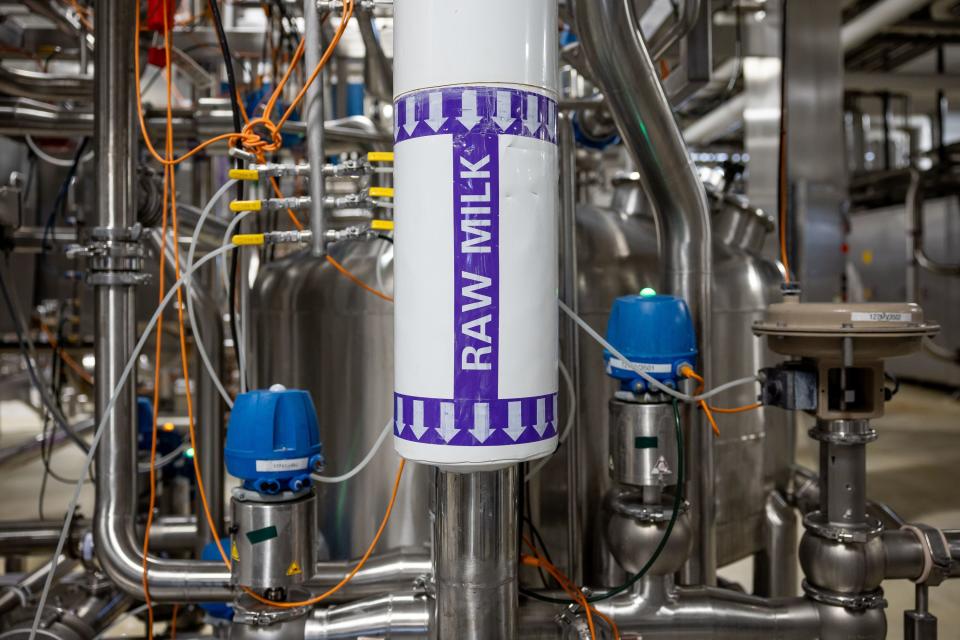
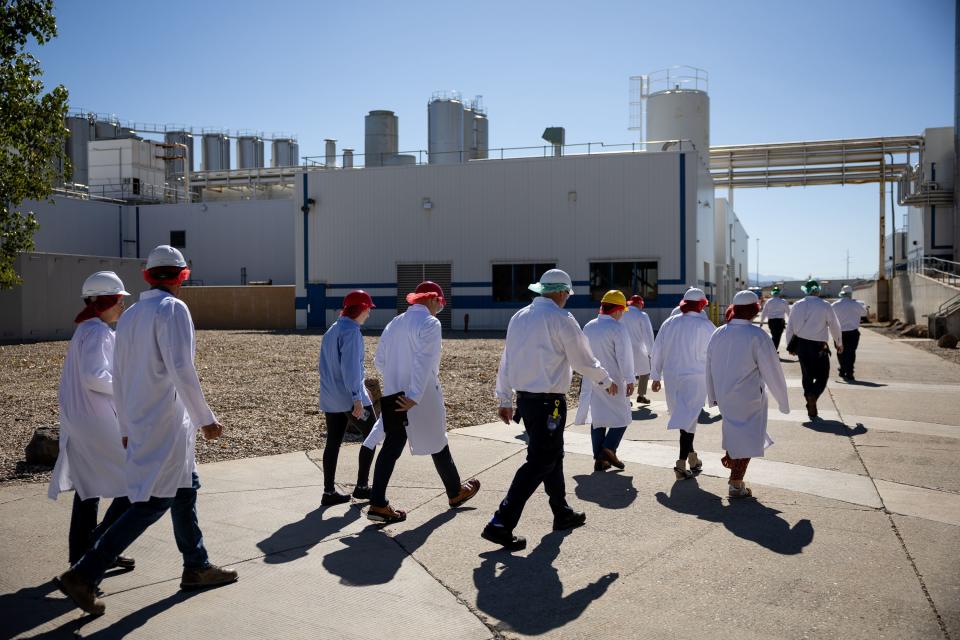
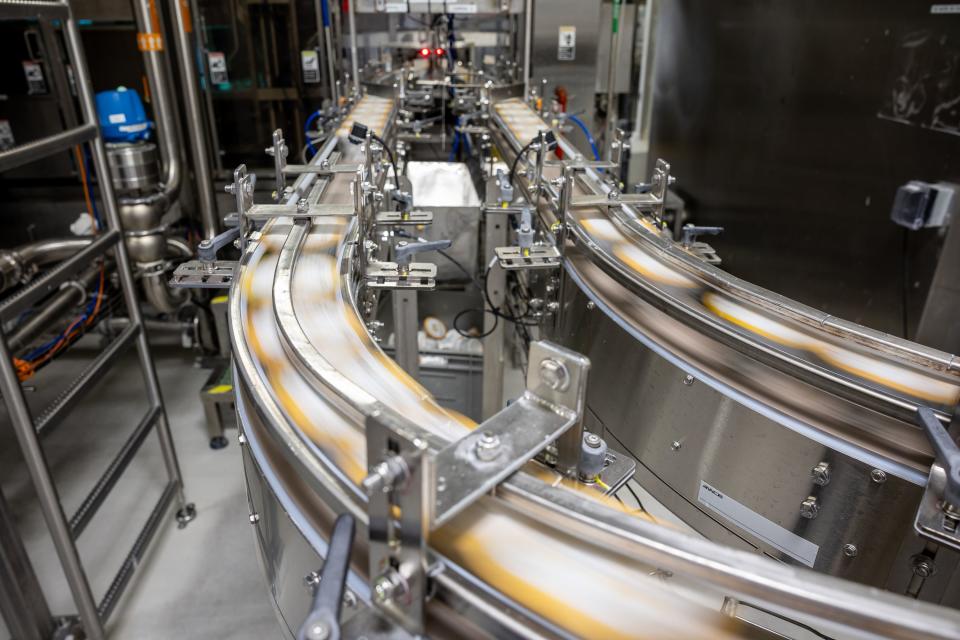
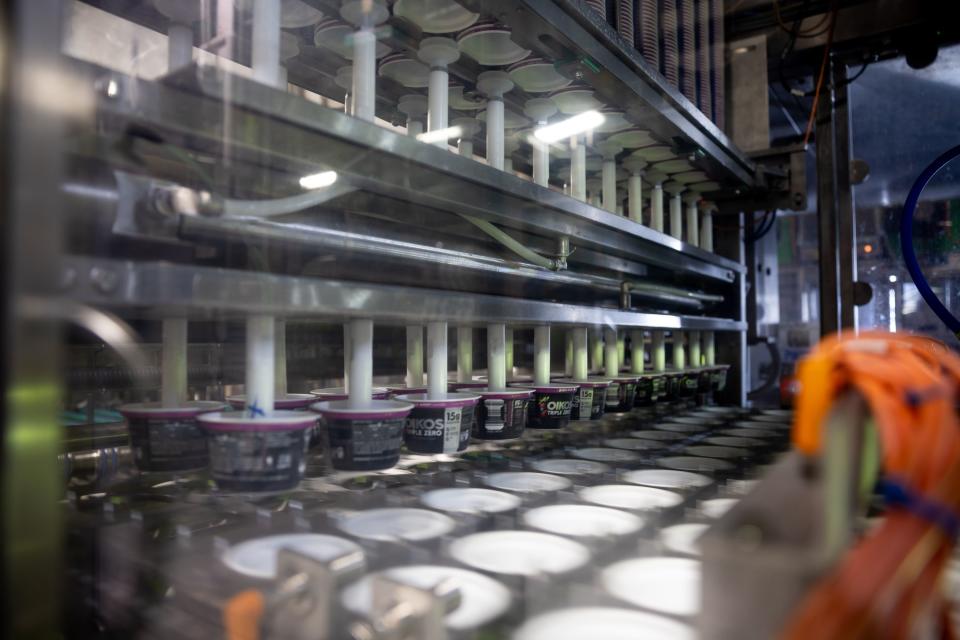

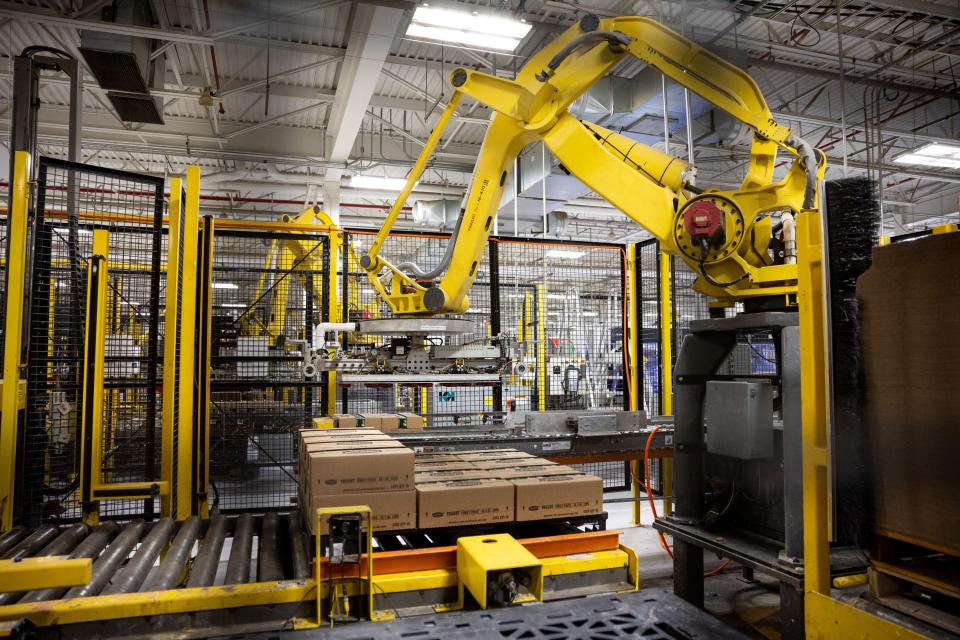
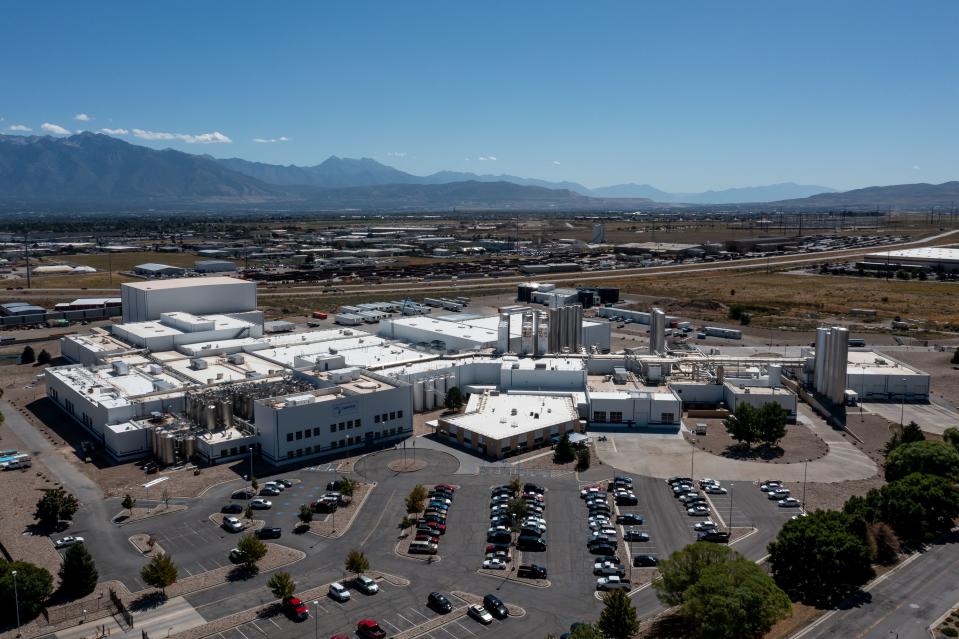
Again, efficiency is at play and quality control happens every step of the way, with 44 operators who control the “brain” of the sprawling production facility.
Olivia Kellam, who is director of producer relations in the West for Danone North America, said having connections to dairy farmers like the Nyes is crucial.
“They are just two hours away. The freshest milk will give us the highest quality product,” she said.
Back in Millard County, both Pearson and Peterson stressed the economic benefit of water, with its genesis in agriculture, spreads its tendrils far beyond that. That a bale of hay is more than just a bale of hay, but grows jobs.
“It keeps that economic benefit with the water use here,” he said. “And it is not just creating alfalfa, it is creating milk, cheese, yogurt, and all those things create more jobs. So basically the economic benefits stays home, you shop home, eat, do home, it stays here,” Pearson said. “You keep more value in the local economy.”
Related
Peterson, a water attorney, Delta resident and policy expert who serves on multiple state boards such as the Legislative Water Development Commission and Utah Water Task Force, among others, said he’s in discussion frequently about agriculture’s use of water, which he says supports not only dairy and beef cattle, but chickens, turkeys, sheep and hogs.
“If someone wants to suggest something else to do with the water,” he said, his voice trailing off.
“It’s part of a sustainable food supply.”
Correction: A previous version incorrectly listed Robyn Pearson as a former Millard County commissioner. Pearson was a county administrator.

